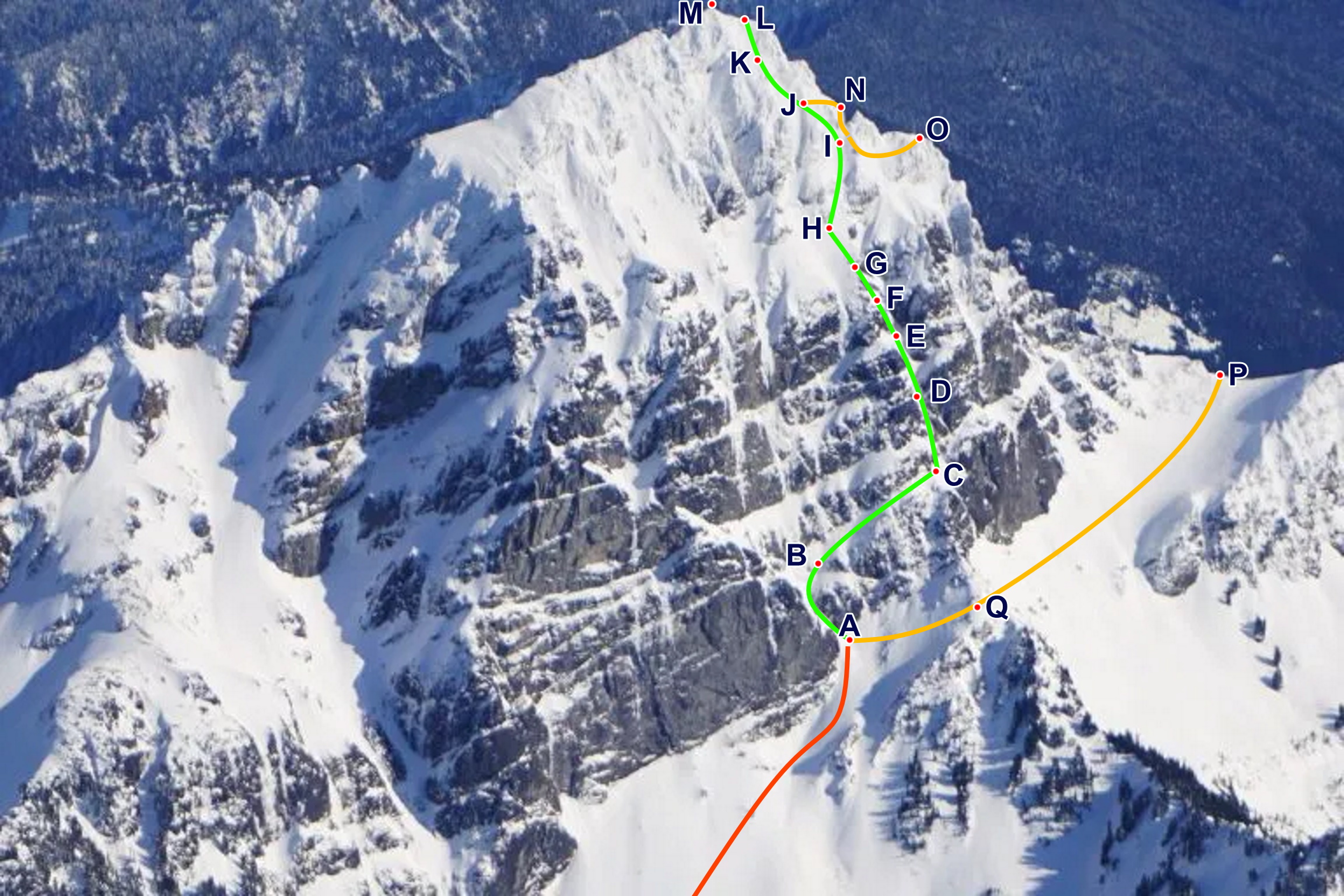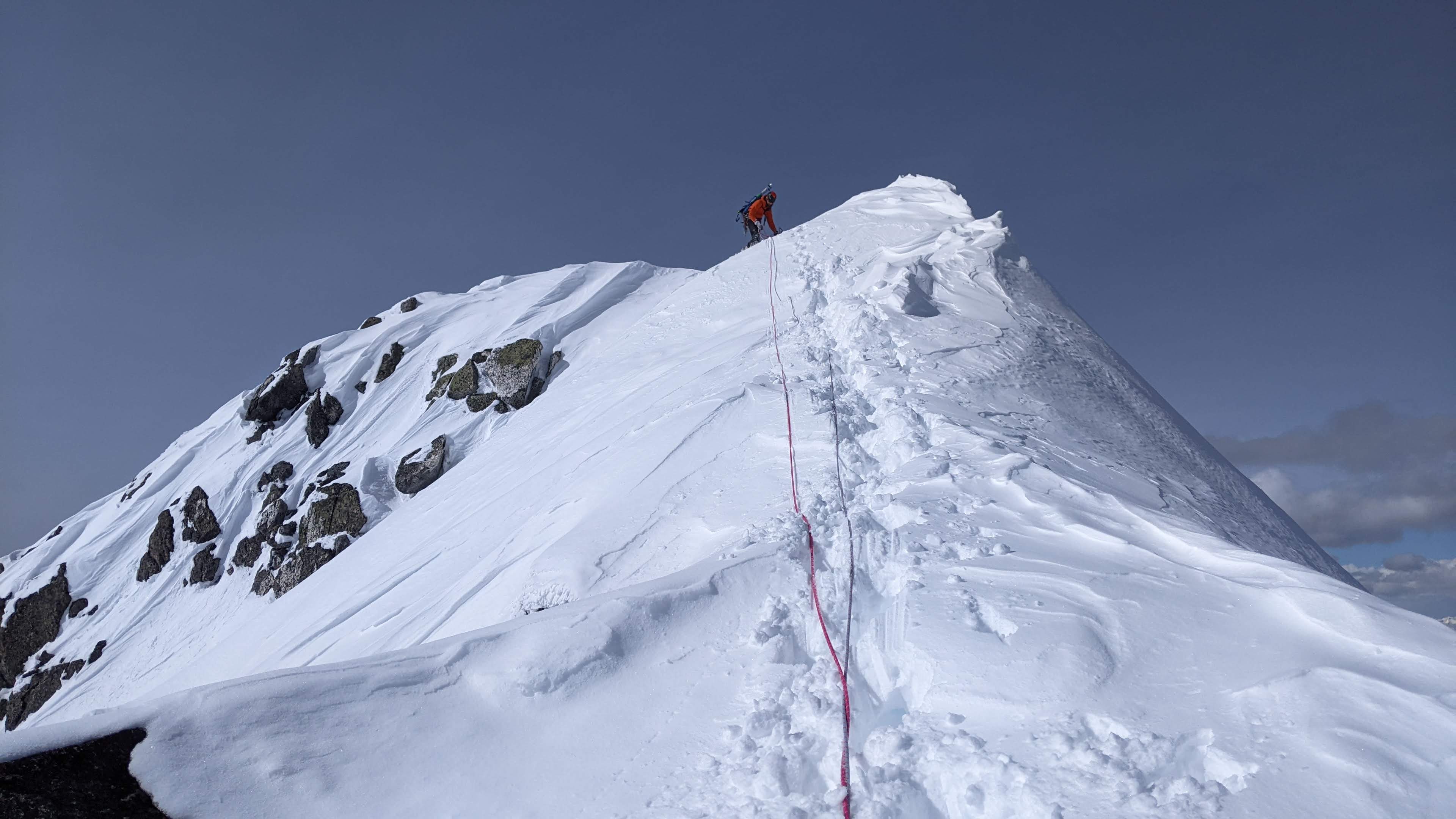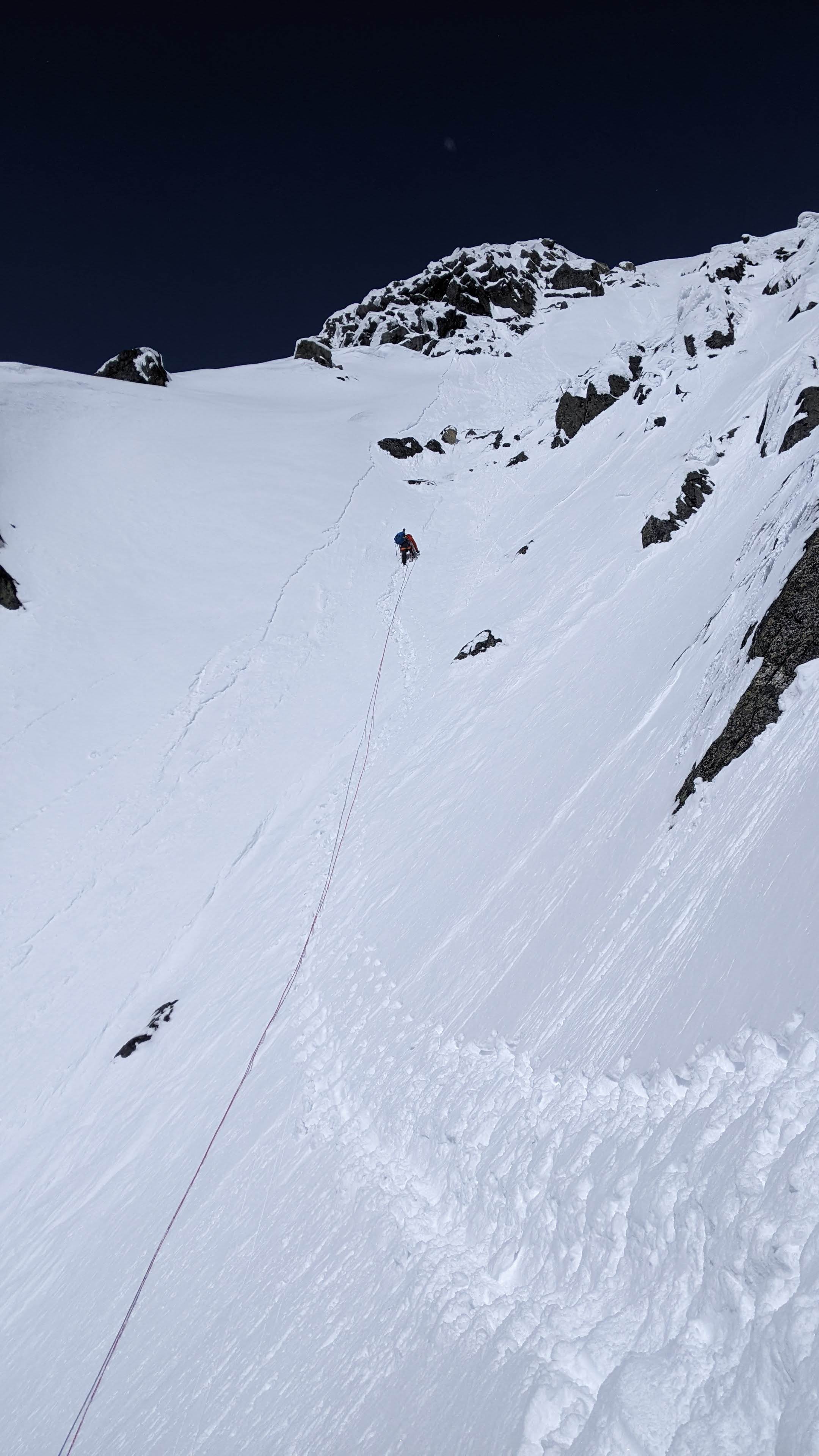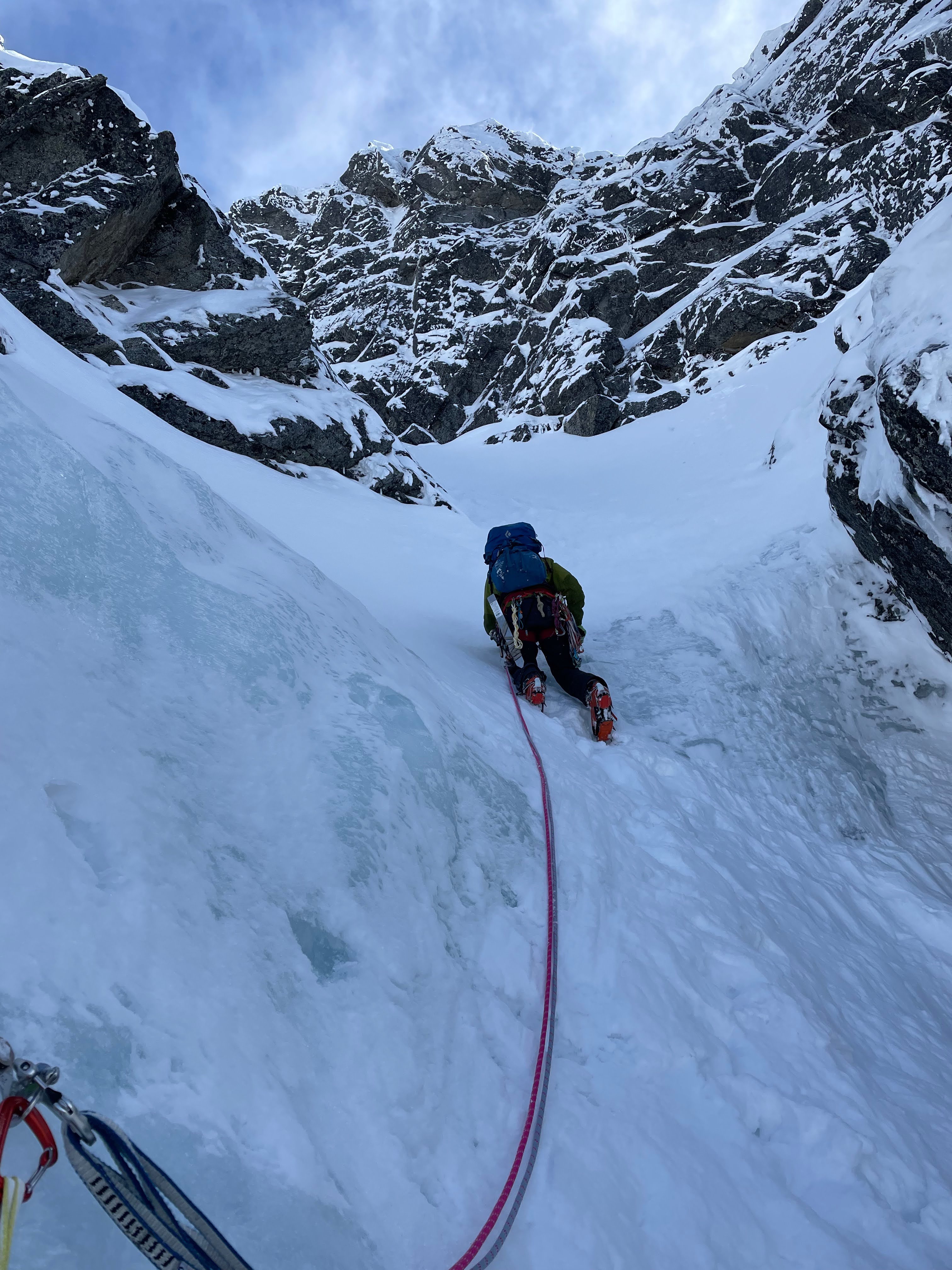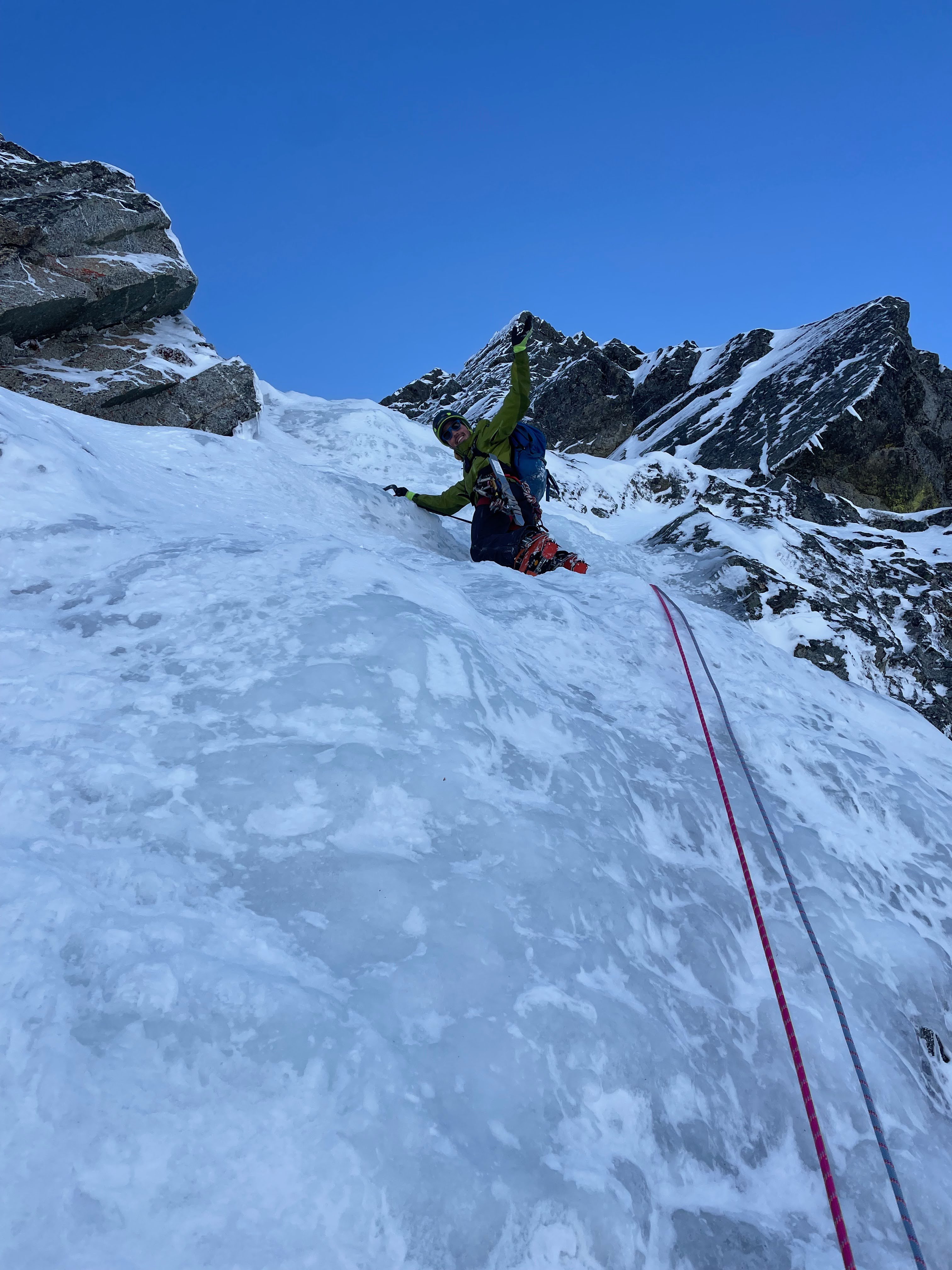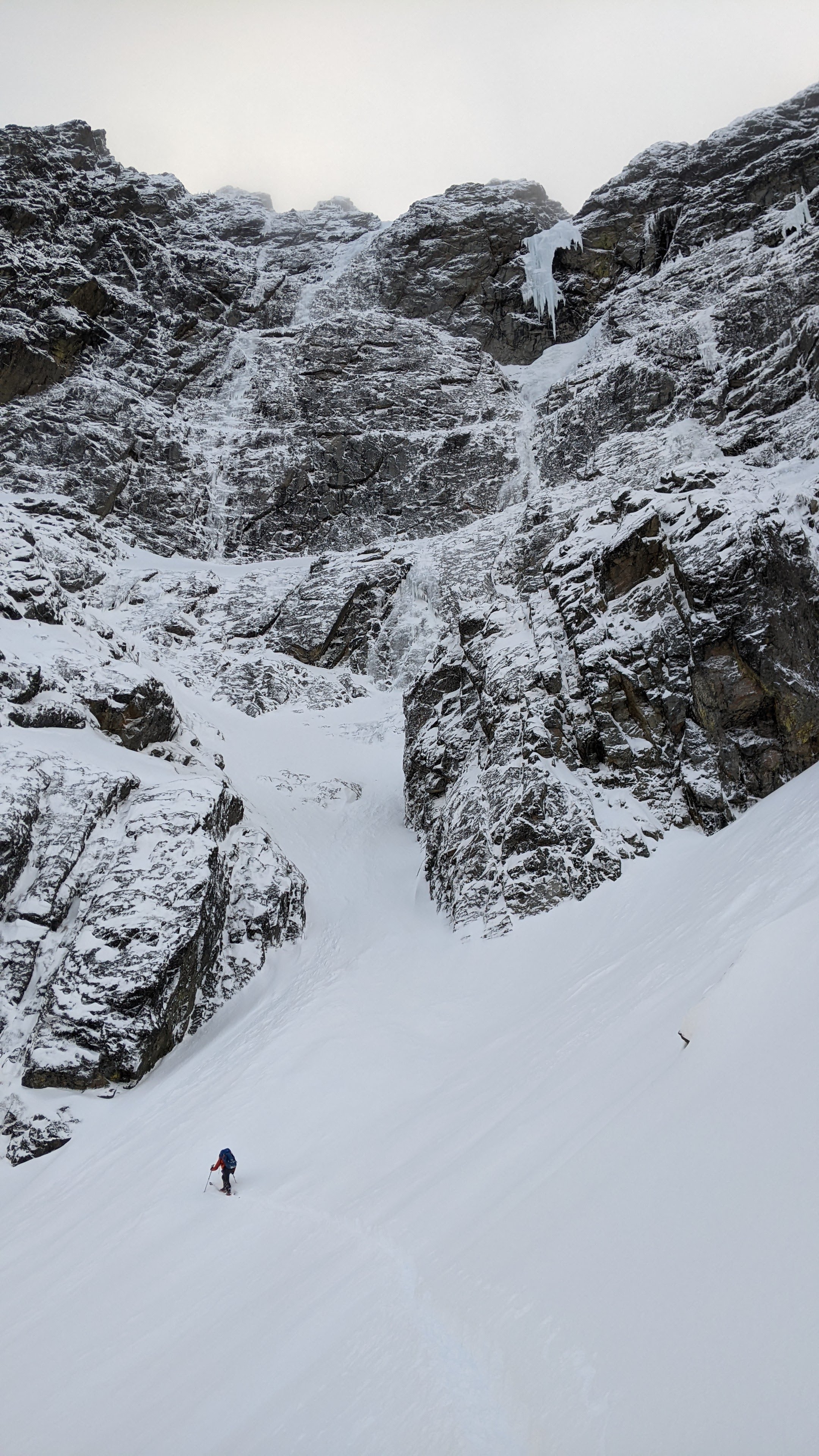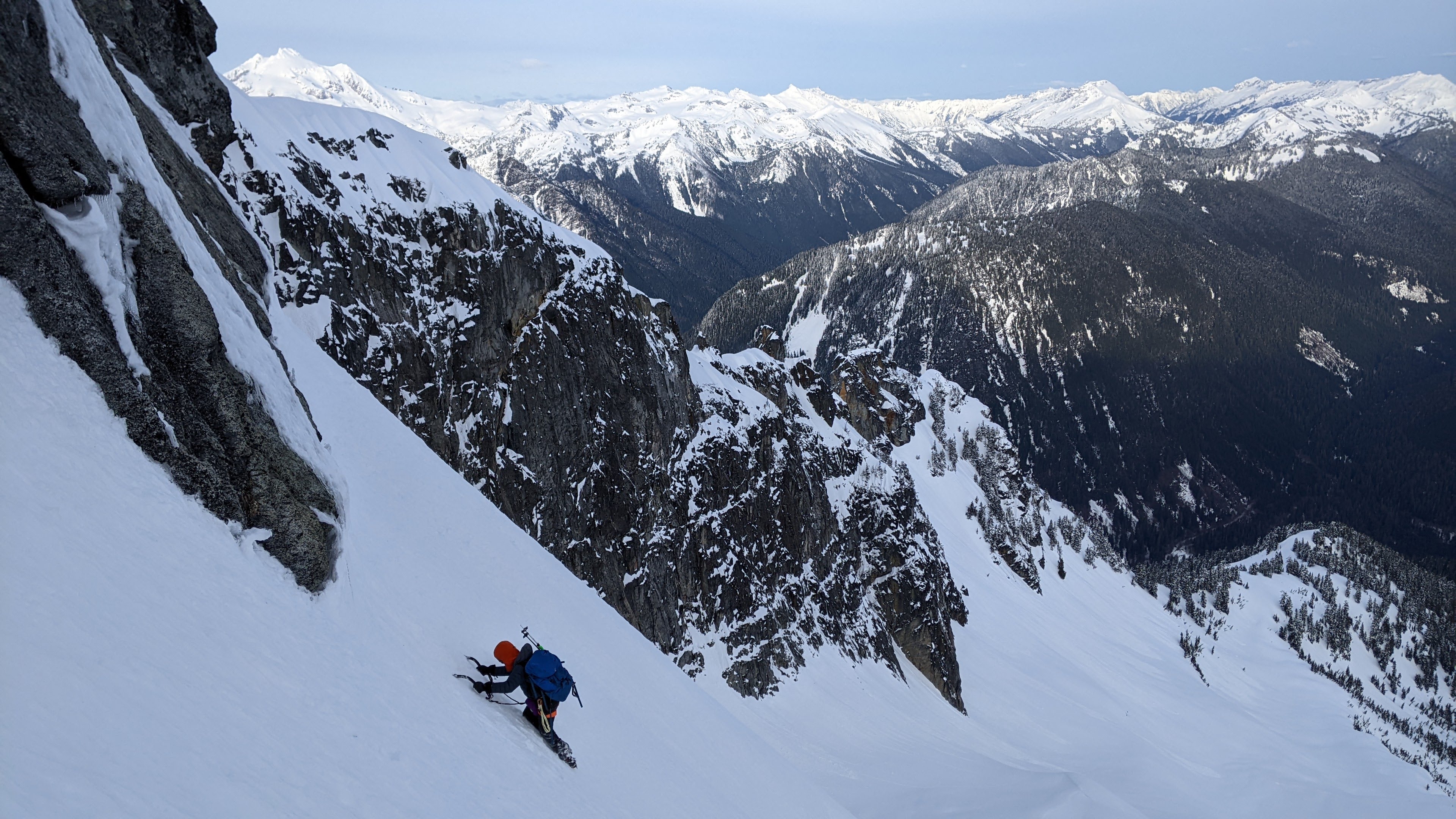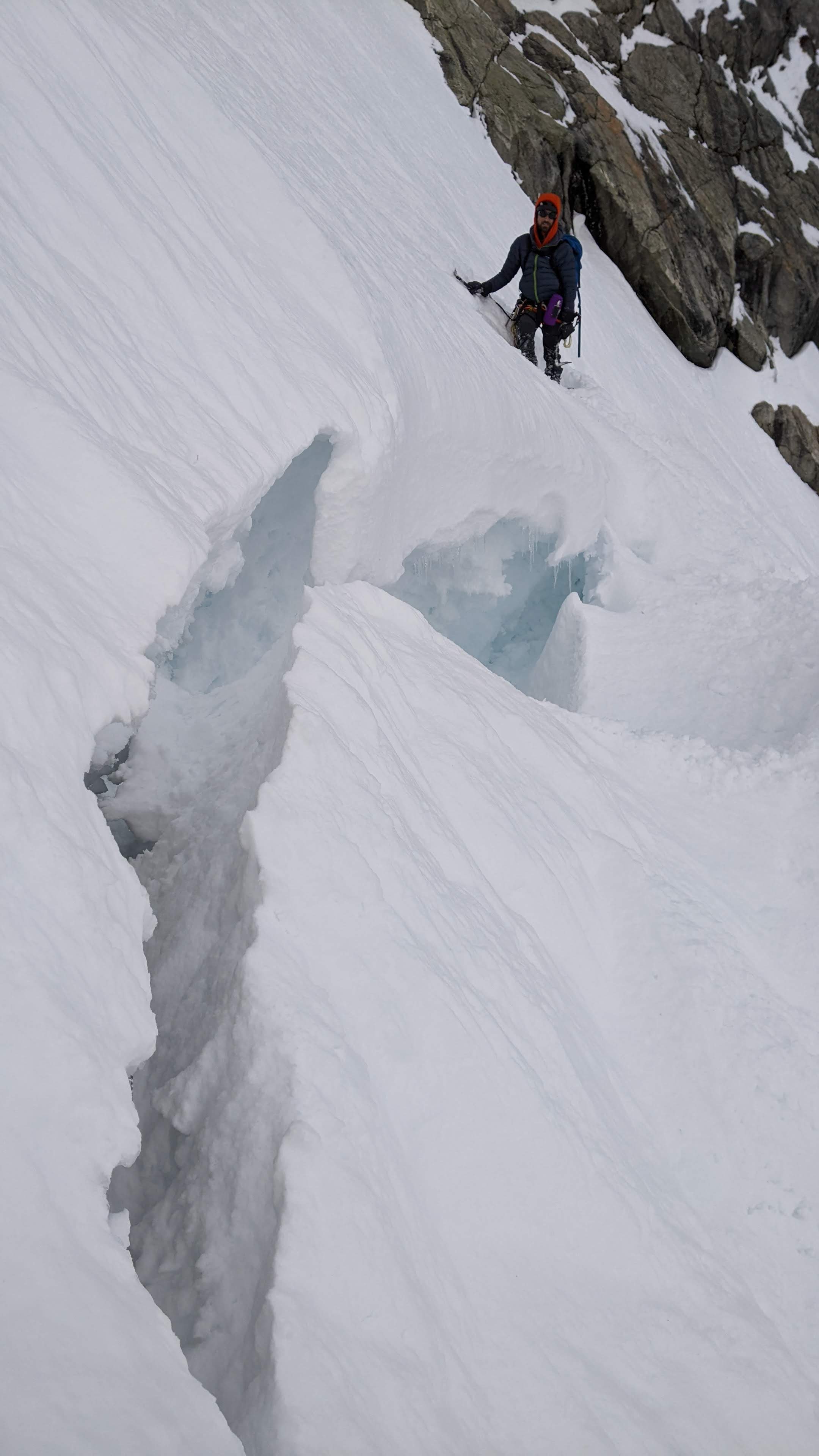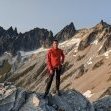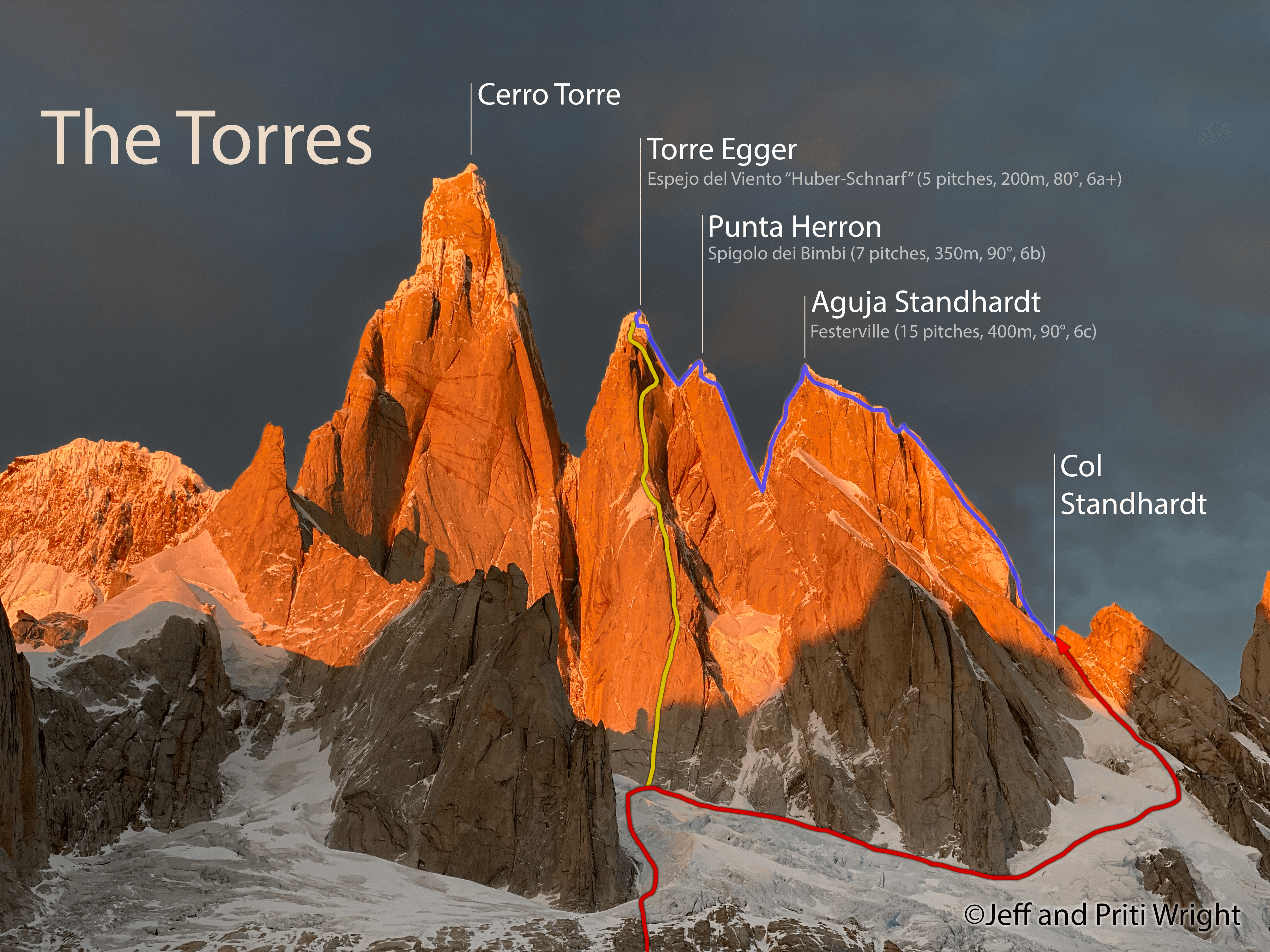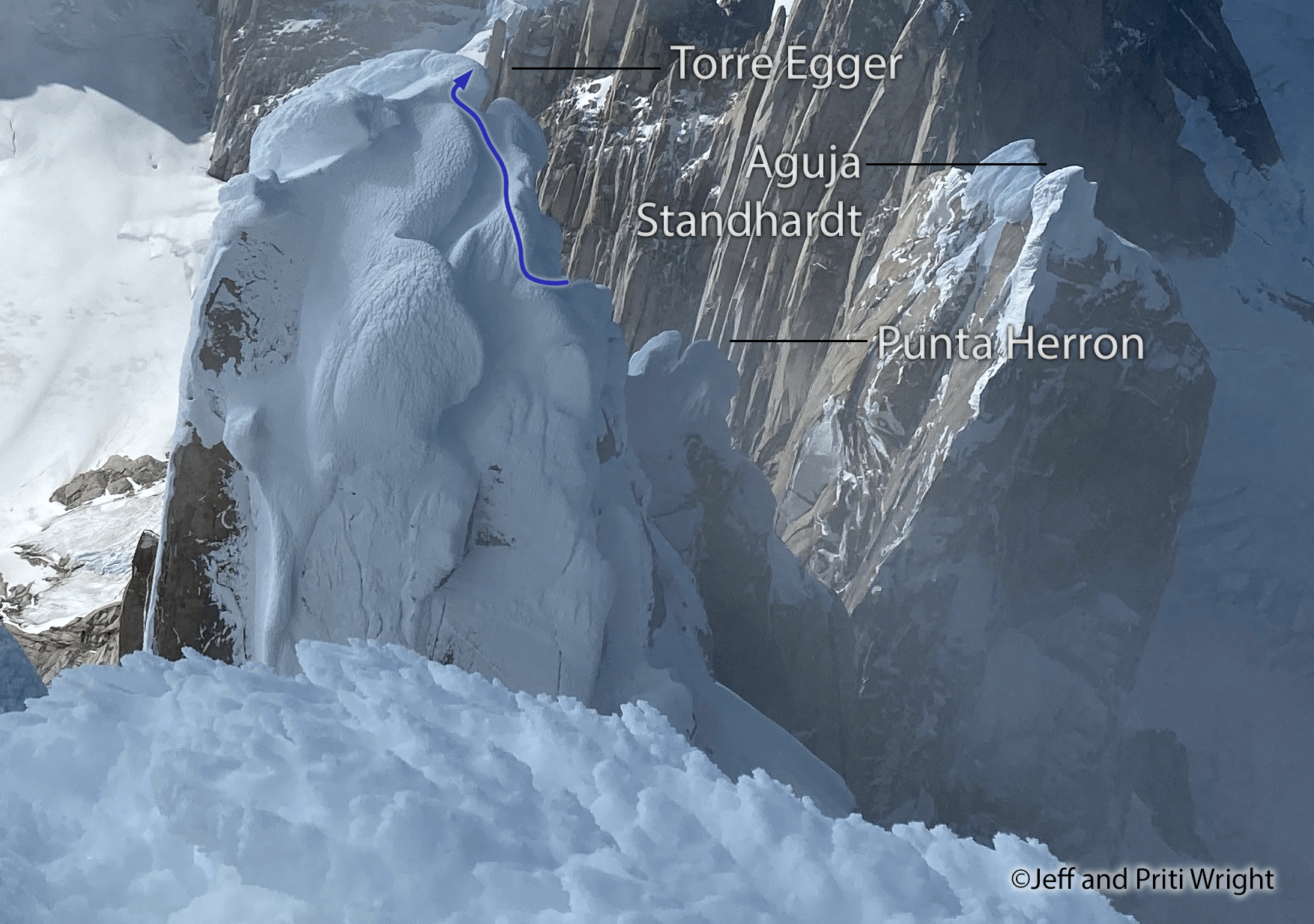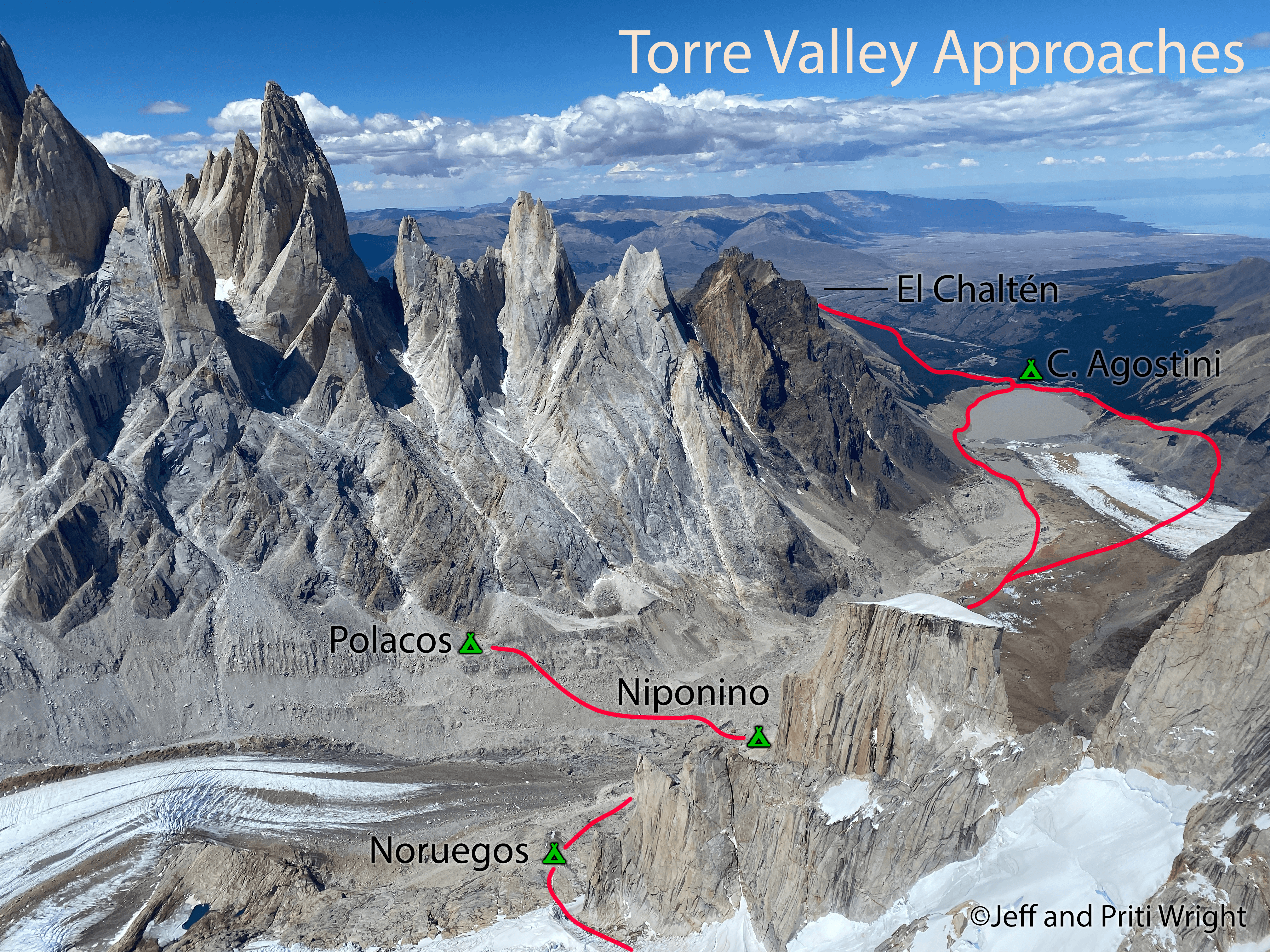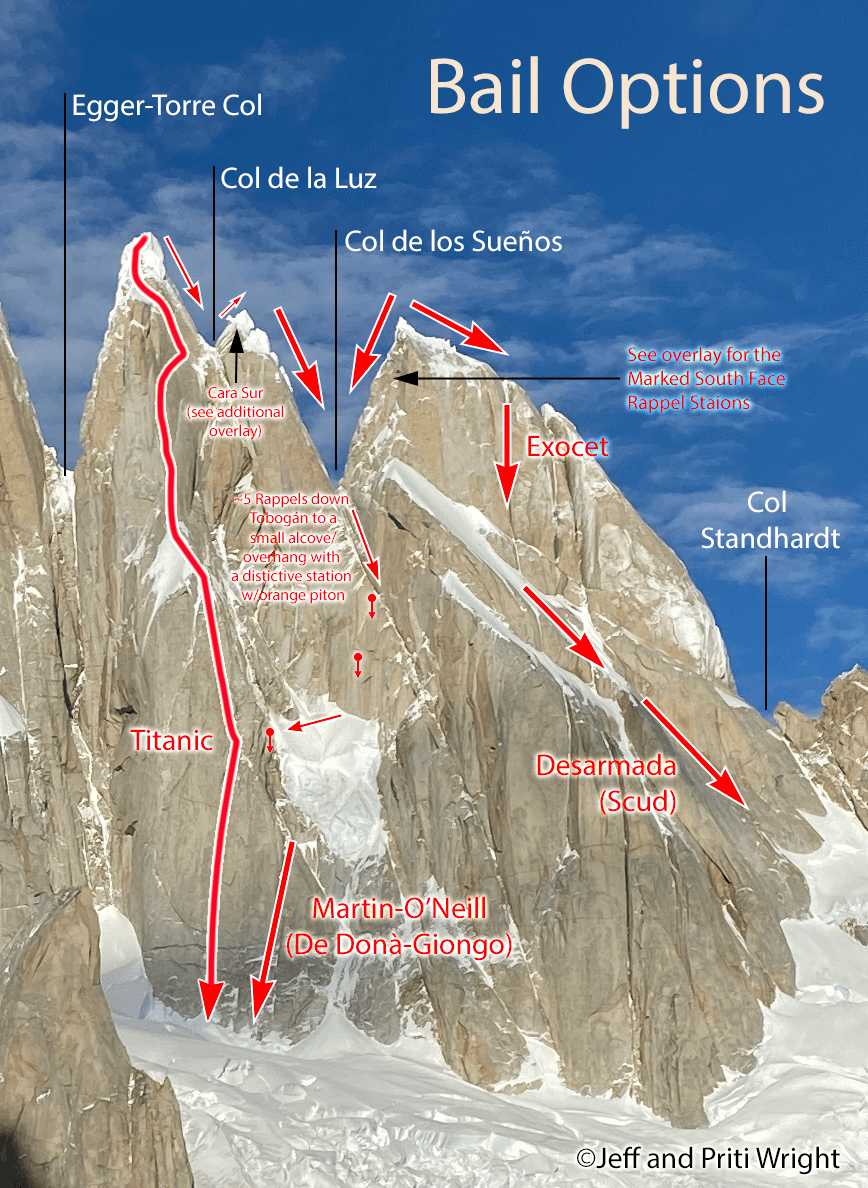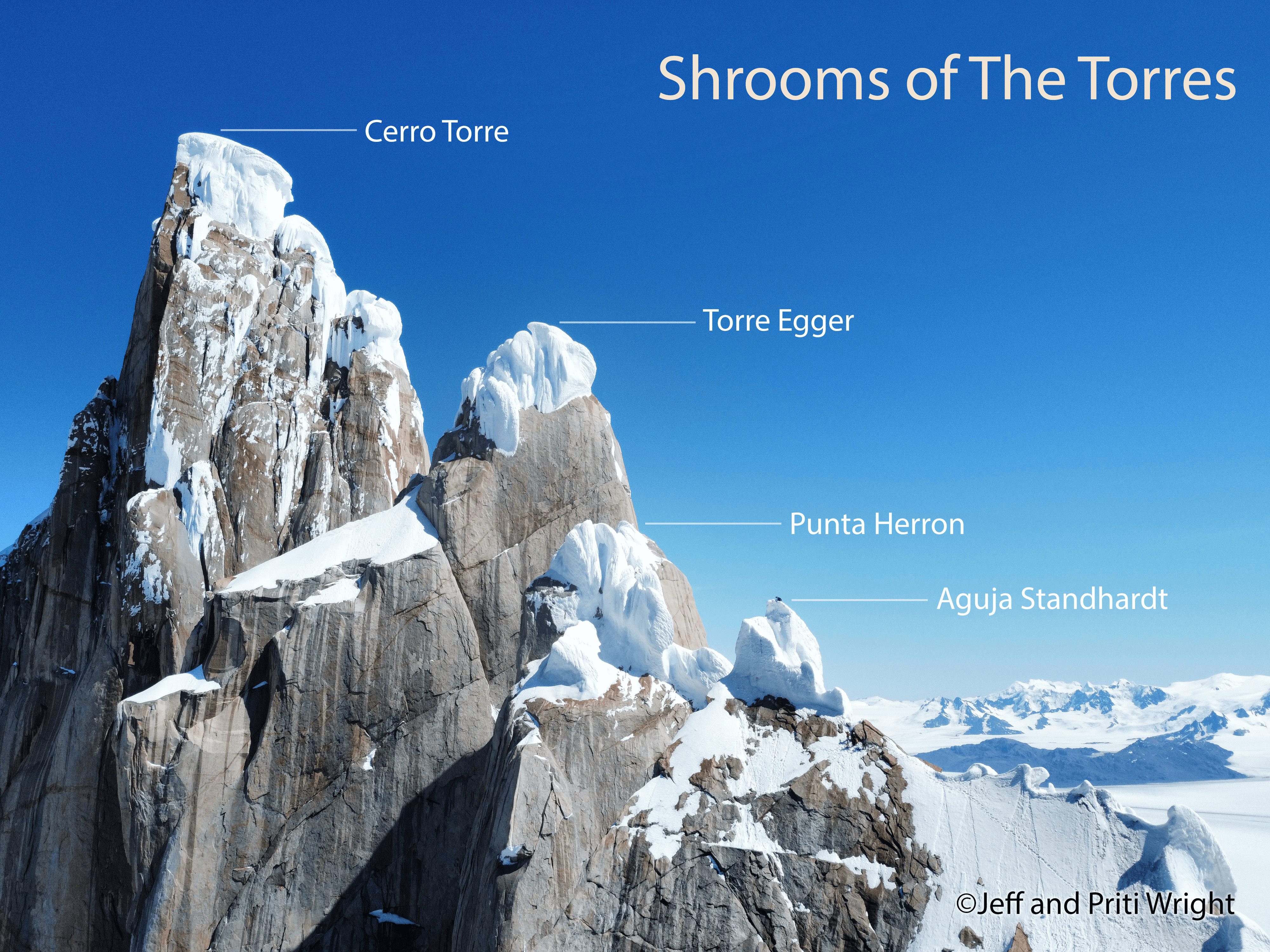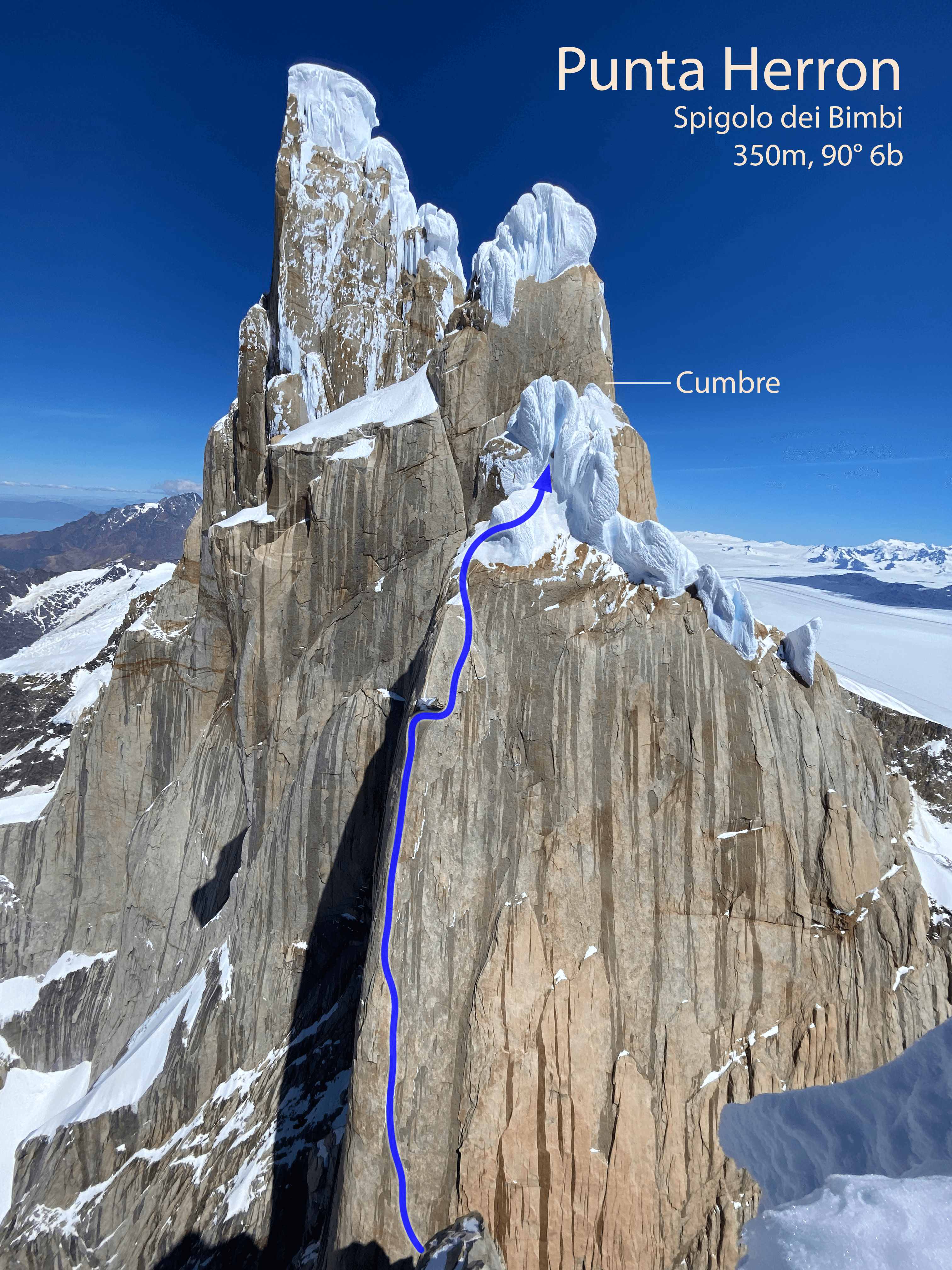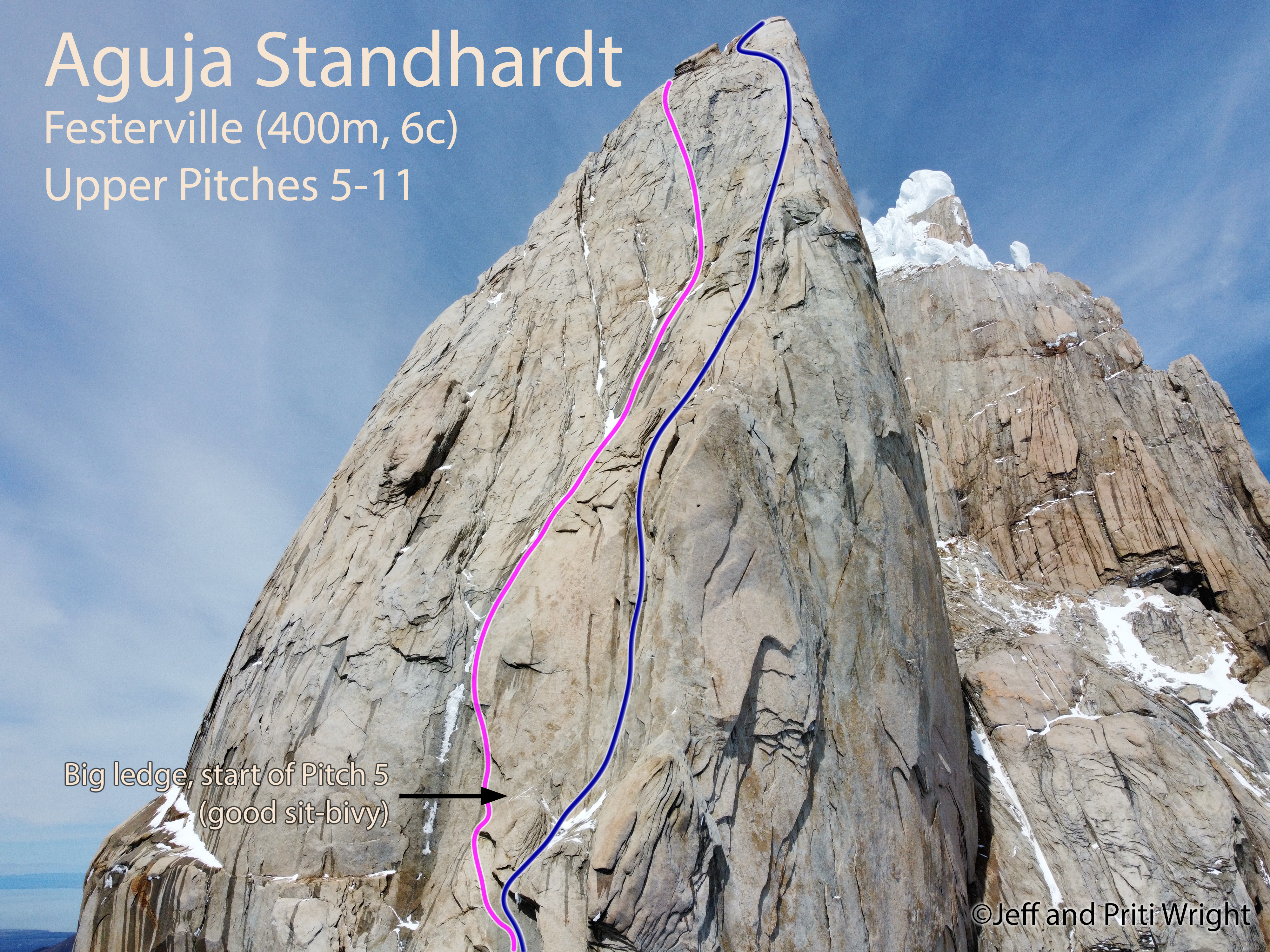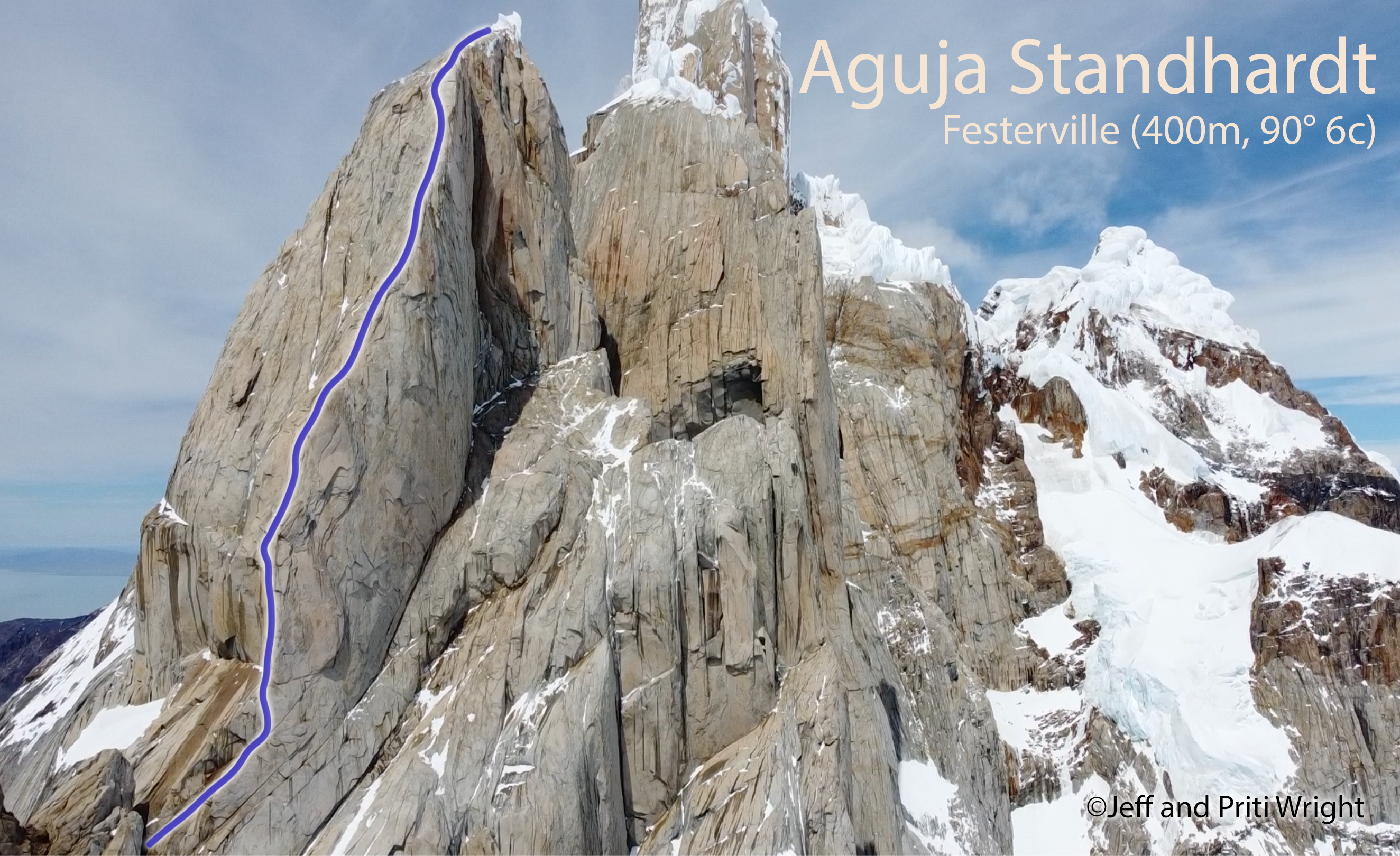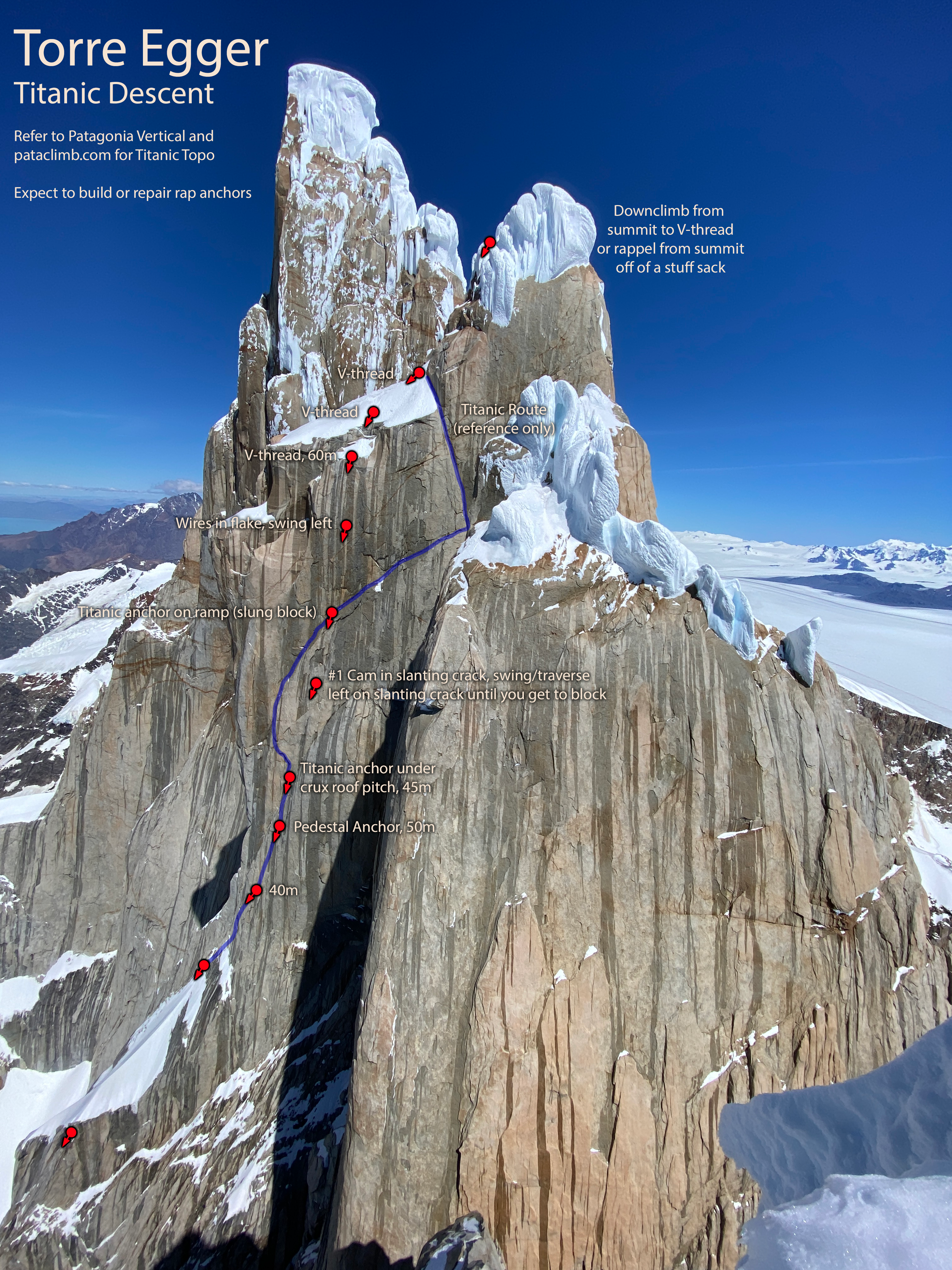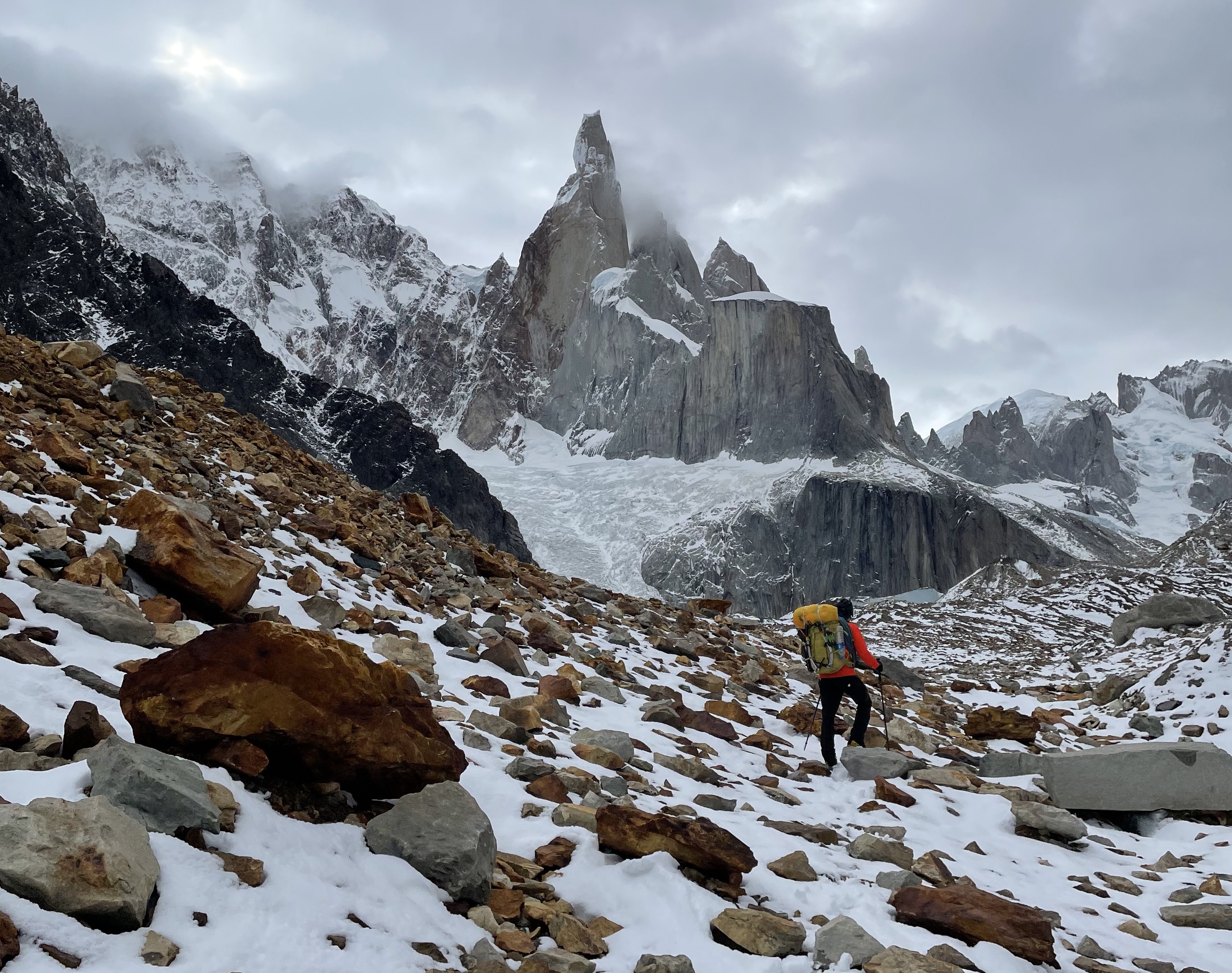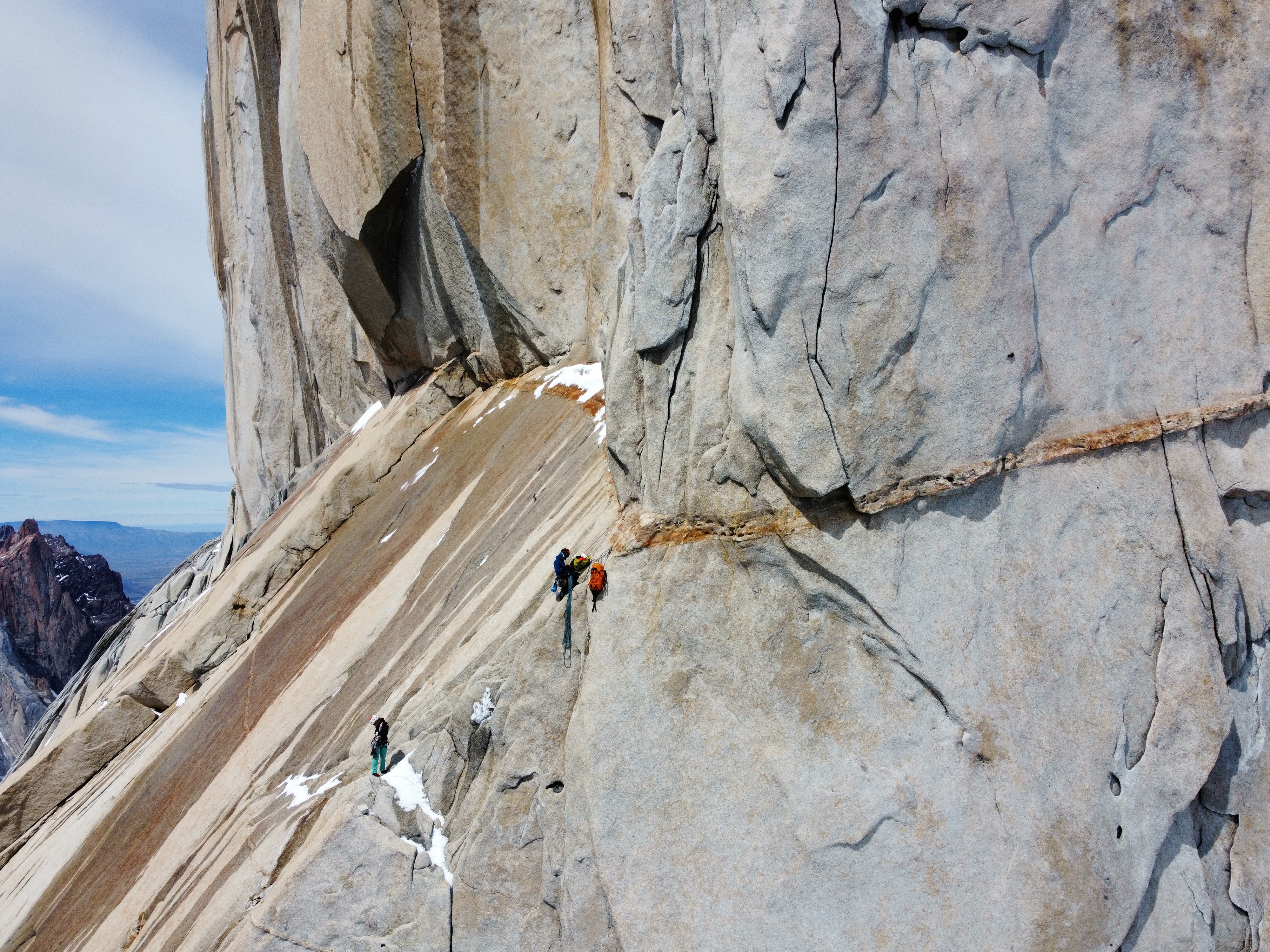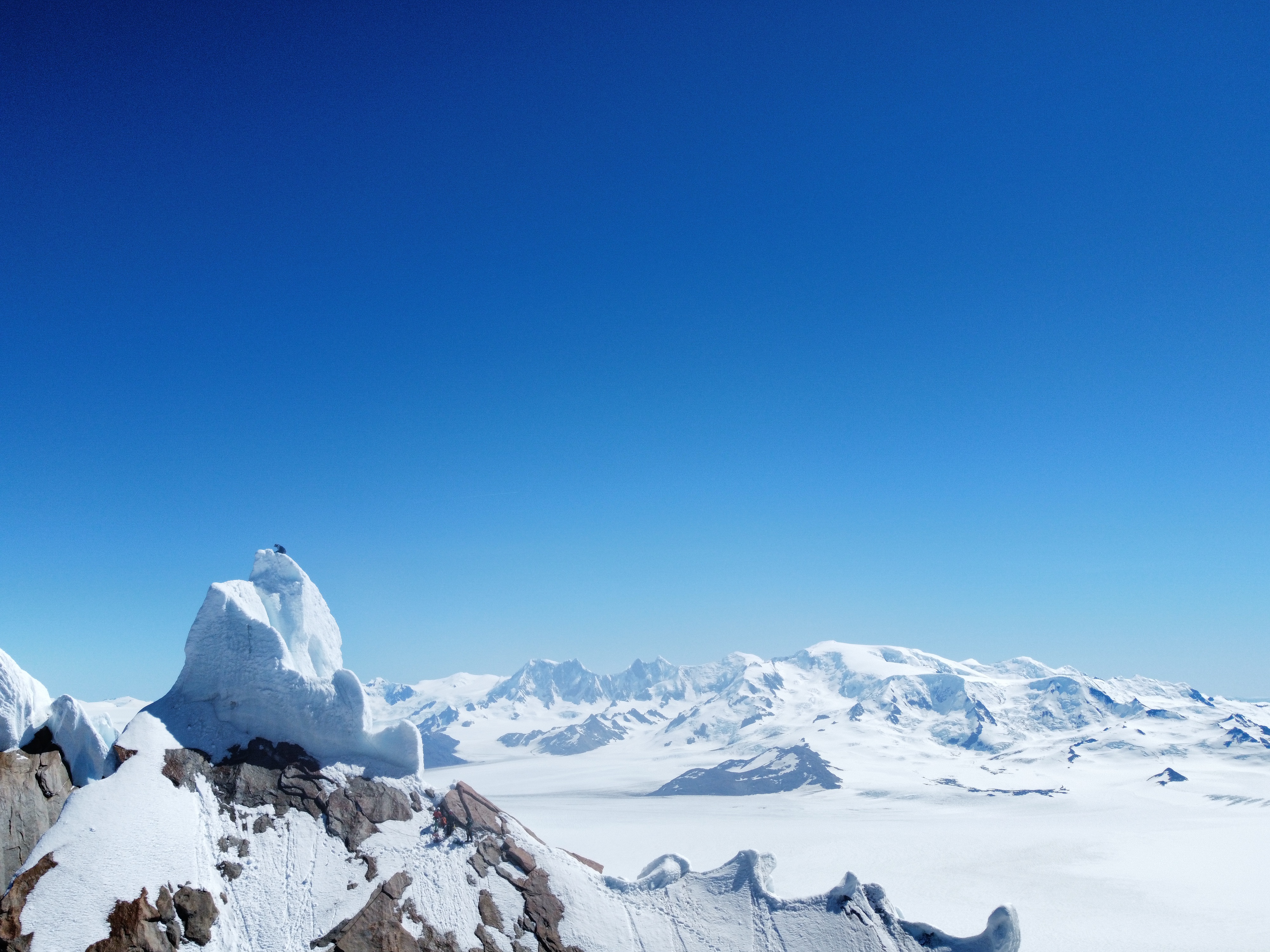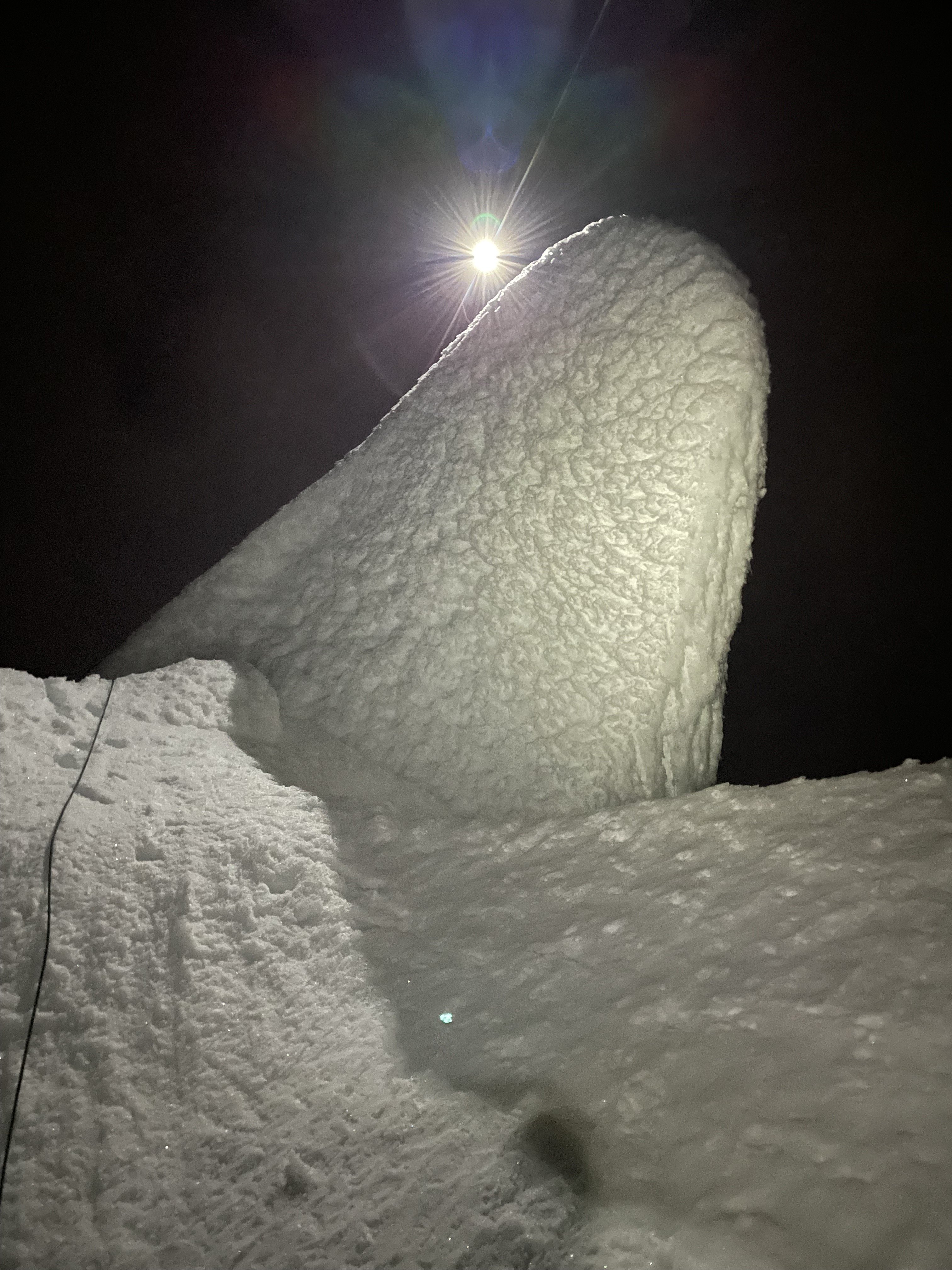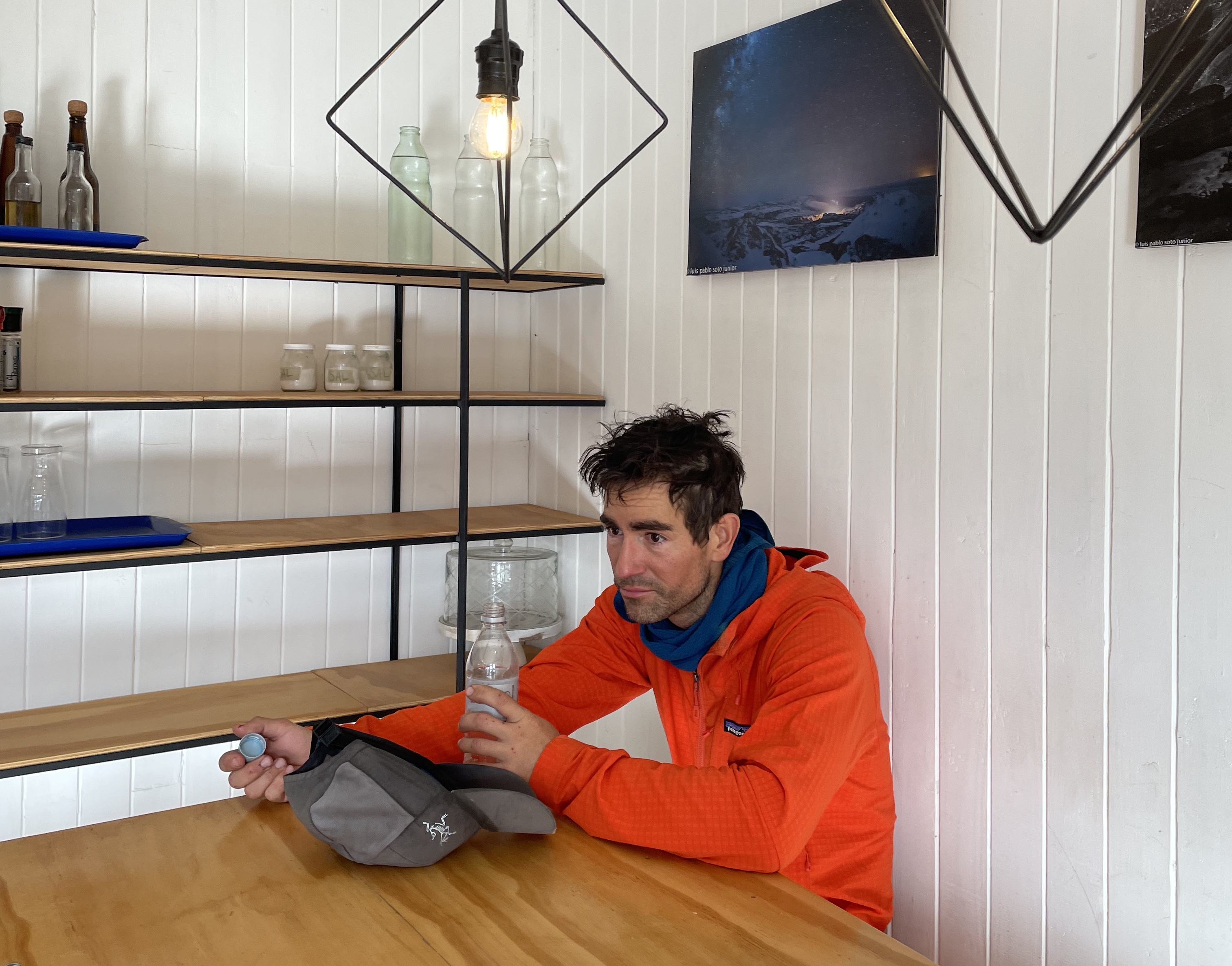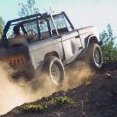Leaderboard
Popular Content
Showing content with the highest reputation on 04/22/22 in all areas
-
Trip: North Cascades - Sloan Peak - Superalpine (WI3-4, 1000') 04/17/2022 Trip Date: 04/17/2022 Trip Report: Fabien and I climbed Superalpine this past Sunday and topped out on Sloan peak. History: This route was attempted on 02/28/2020 by Kyle and Porter and on 03/15/2020 by Porter and Tavish We left Saturday afternoon, got the car to about 2000ft on FS 4096 just before the snow became continuous. We skinned in with overnight gear and setup camp near a small accessible stream feeding Bedal Creek at 3600ft. Sunday we woke up at 4:00 a.m. and we're breaking trail soon after. We found an easy crossing across the creek at 3950ft and stayed climber's right of the moraine to avoid being in an avy path until we were forced back in the forest. We started seeing the route peeking through the trees and reached the large snow field below the West face of Sloan peak. We approached up to the base of a left leading couloir and stashed the skis there (A). Route: We booted up the couloir, encountered a small step (B) and roped up at (C). (C-D) Short WI4 followed by easier climbing. Careful with rope drag on the rock if the belayer is in the sheltered area before the ice. (D-E) Short ice steps separated by snow. Setup an anchor on the right side at (E) (E-F) Left leaning ice staircase in what looks like a dihedral. (F-G) Snow up to a belay stance in a 5ft step. (G-H) Small ice step then snow up to belay in thin ice. (H-I) Mostly snow with some good ice screw placements. Belayed off a snow anchor. (I-J) 30ft of Easy mixed climbing. Placed cams 0.5 to 1 and made a snow anchor on a wind hardened snow fin: (J-K) Snow bowl. This can have a lot of sluffing and is dangerous if the snow is unstable. We were able to follow a path up that had already sluffed away. It was mostly the top 2in of snow that had fallen the previous night. (K-L) Snow bowl up to a notch on the ridge slightly climbers right (L-M) About 200ft of ridge traverse to the summit. Descent: (J-N) We decided to go down the snow ramp on the other side of the mountain that the corksrew follows for a bit. We aimed for a gendarme (Below the N). From there we did one 30M rappel off and traversed under the gendarme to the corkscrew route (O). By then the East side of Sloan Peak was in the shade and we found good snow to front-point sideways and down a ramp for almost 1000ft. (650ft elevation loss) There was a moat at the bottom which we negotiated skier's right. We had brought two poles up for the next section that involved wallowing across the bottom of the SE face to reach the South ridge of Sloan at 6750ft. (P) From there, we headed back to the W ridge near where the route starts (Q). It doesn't look like it can be traversed easily a first but there's a passage around 6100ft. At this point, we could see our skis and felt like it was in the bag. The chute skied amazingly well but once we reached the snow field, the snow had started to crust making it quite hard to turn. We arrived back at camp at dark pretty tired. Since we both had engagements on Monday, we slept until 4:00 a.m then skied most of the way back and made it home by 11:00 a.m. Overall, this is a fun route when the conditions are there. The snow bowl at the top is probably the most dangerous part of the route when the snow is unstable. It may be possible to bypass by staying on the ridge (Probably from J). Strava GPX Enjoy! Gear Notes: Gear: 11 ice screws (Used all) 8 draws 2 pre-rigged quads 0.3 - 2" cams 1 picket (2 would be better) Small Nuts (Unused) Approach Notes: Drive from Darrington while Bedal pass is closed. High clearance vehicle recommended for FS 40967 points
-
Trip: Mount Torment - Moraine Lake Couloir, NW Glacier Trip Date: 04/16/2022 Trip Report: Me and the boys (@Albuquerque Fred, @thedylan, @MGraw) had a great time in the sun for the chilly weekend of April 16-17 on Mount Torment. We skied the Moraine Lake Couloir and most of the NW Glacier on Mount Torment. We were able to drive to .5 miles past the gate at the park boundary on Cascade River Road before we hit snow. We booted for about a half mile past that, then skinned to the Eldorado Trailhead. We again booted to the boulderfield at 4k as per usual, then we skinned up, crossing the ridge into Torment Basin, and to Torment Col (west of Torment). The skiing down from there was good but I was too interested in what was to come to really think much about it. The plan was to climb Torment, then ski the couloir to Moraine Lake and camp. When we got to the entrance to the couloir though the exit onto the glacier looked tough. Dylan gamely started to lead with only pickets for pro, 1 aluminum axe, and aluminum crampons, plus skis and overnight gear on his back. Just out of the belay we realized we would never have time to climb all this and make camp at a reasonable hour so Mike suggested a new plan , we would fix the line and finish the route tomorrow. Dylan got the rope up, rapped, and we skied the AMAZING couloir down to the lake. As in most features like this, the snow being good wasn't the most important part. The setting, the purity of the line, the adventure was made it rock. But the skiing was also good. Making camp at like 4pm in April was full on cushy, plenty of time to build a monster wall around the tent, drink whisky, and lounge. The next morning we booted the couloir, climbed the fixed line, and ascended the NW Glacier on Torment. We had limited beta on this but Tom Sjolseth's report said "we skinned to within 50' of the summit", easy right. Well, not so much. We ran into another short rock step, which, though easy would involve another two transitions to get past. We figured it would be after 10pm by the time we got to the car, so we bailed at 7300'. The ski was epic. Top 5 ski runs ever for sure. We will be back for the summit. The crew: Thanks for the shot Mike: Dylan scouted the scary roll over: Dylan rapping after the lead: I'm sure Fred didn't just fall: Mike and Dylan working the lower couloir: The whole thing: Dylan slays it, even in camp: If you have to boot it might as well be into the sunshine: Mike following the fixed rope: Topping out: This sucked: We should have lapped this one. Classic Cascdes: Gear Notes: 1 axe, crampons, glacier gear, avy gear, camping gear. not enough. Approach Notes: Eldo worked well, I've done Torment Basin and didn't want to do it with skis on my back.1 point
-
Trip: Patagonia - Torre Egger Smash 'n Grab - Huber-Schnarf Trip Date: 01/21/2022 Trip Report: Climbers: Jeff and Priti Wright Location: Patagonia - Chaltén Massif - El Chaltén, Argentina Traverse of 3 peaks: Aguja Standhardt - Punta Herron - Torre Egger Climb Date: January 18, 2022 - January 21, 2022 Full Trip Report: https://alpinevagabonds.com/torre-egger-traverse-a-smash-n-grab-story/ Climbs/Rappels Aguja Standhardt Climb via the North Ridge route Festerville (400m 90° 6c) in 15 pitches (14 pitches of rock and 1 pitch of rime ice) from Col Standhardt Aguja Stanhardt Rappel via South Face (7 Rappels) Punta Herron Climb via North Face route Spigolo dei Bimbi (350m 90° 6b) in 9 pitches (5 pitches of rock and 4 pitches of snow+ice+rime ice) Punta Herron Rappel via South Face (1 Rappel) Torre Egger Climb via North Face route Espejo del Viento (200m 80° 6a+, often referred to as the “Huber-Schnarf” route) in 5 pitches (3 pitches of rock and 2 pitches of snow+rime ice) Torre Egger Rappel via Titanic (countless Rappels, two downclimbing snowfields, and one 30m downclimb from the summit) In January of 2022, we completed another Patagonian “Smash ‘n Grab”, summiting three of the four peaks in the Torre Range via previously established routes (11 days Seattle-to-Seattle): Aguja Standhardt, Punta Herron, and Torre Egger. Including our ascent of Cerro Torre in 2020, we have now climbed all four summits of the Cerro Torre skyline, making Priti the first female to summit all four peaks. 2022 marked our fifth climbing trip to El Chaltén. In 2019, we completed a 10 day Smash ‘n Grab of Cerro Chaltén (Fitz Roy). In 2020, we spent two months in El Chaltén, during which time we climbed Cerro Torre on the route Via dei Ragni. Urgency and several parties in line behind compelled us to accept a top-rope on the final pitch of the summit mushroom of Cerro Torre, joining the conga line. Pink: The accidental line we took on wet, grimey terrain....oops (not recommended); Blue: the original route Festerville on golden granite Their 2022 traverse from Aguja Standhardt to Torre Egger enchained three distinct climbing routes (all established by different parties), climbing for four days and three nights, bivying twice on Standhardt and climbing through the third night up-and-over Torre Egger. After arriving in El Chaltén, we cached a tent at the standard Niponino Base Camp, carrying a tarp and a double sleeping bag for the traverse. We started on the route Festerville (400m 90° 6c) which follows the spine of the North Ridge of Aguja Standhardt for approximately 13 rock pitches. Another team of two (Michał Czech from Poland and Agustín de la Cerda from Chile) started up the route ahead of us and the four effectively joined forces, climbing symbiotically, each team helping the other along the way. After summiting Cerro Standhardt via 30 meters of 90° ice and rime, Michał and Agustín rappelled the Exocet route back to Base Camp while we (Jeff and Priti) made seven rappels down the South Face of Cerro Standhardt, continuing the traverse. The South Face rappels end 30 meters below the Col de los Sueños (the col between Standhardt and Punta Herron), requiring climbing the final 30m of the route Tobogán to reach the col. The traverse continued up to Punta Herron via the route Spigolo dei Bimbi (350m 90° 6b) climbing 5 pitches of rock and another two pitches of beautiful, vertical ice and rime to the summit. A single rappel from the summit of Punta Herron led down to Col de la Luz under the North Face of Torre Egger. Spigolo dei Bimbi included some of the most fantastic rock climbing that we have ever climbed in Patagonia! From Col de la Luz, we continued up the route Espejo del Viento (200m 80° 6a+, often referred to as the “Huber-Schnarf” route) in the dark of night for three rock pitches which ends in a long, run-out, wet, technical slab traverse under Torre Egger’s overhanging summit mushroom. We continued through the night, climbing two more moderate pitches up the mushroom on easier 70 degree snow and ice to the summit of Torre Egger at 2:00AM, the most difficult summit in the Chaltén massif. We continued through the night without a bivouac, descending 27 rappels and down-climbing along the route Titanic which follows the East Pillar of Torre Egger. Upon reaching the tent at Niponino in the Torre Valley after 44 hours of constant movement, we collapsed in the tent realizing we were too late to catch their planned flight home. Unfortunately, we neglected to notify anyone that we were missing our early-morning airport taxi. When the taxi arrived at our hostel Aylen-Aike, the driver woke up Korra Pesce who was sleeping in the room where we had previously slept. Korra notified the hostel owner Seba and Rolando “Rolo” Garibotti who were all quite worried and proceeded to notify rescue teams. Later that morning, Rolo successfully contacted us on our inReach before any rescue efforts began, teaching us a valuable lesson: let people know if you're going to be late! A week later, a team of bold volunteers attempted an unsuccessful rescue of Korra Pesce, the legendary French-Italian Alpinist, on the North Face of Cerro Torre who will be sorely missed by his friends, family, companions, and fans. Being back at home in the US by the time the accident occurred, we wished that we had been present to aid the operations. The 2021/2022 Patagonia season was marked by several notable deaths and rescues in the mountains as well as several celebrated new climbs. Patagonia continually demands of its visitors the humility that this place deserves. We really want to thank Rolando Garibotti and Colin Haley for their beta, support, and encouragement; Agustín and Michał for being a great team to partner with as we shared the same objective on Cerro Standhardt; Aylen-Aike for putting us up at the last minute in El Chaltén; Hector Tito Soto Nieto and Andrew Reed for loaning us your cams (we decided what route to do while on the airplane); our bosses and work colleagues for letting us go for a week with hardly any notice; Ilia Slobodov for the awesome weather updates while on route; and Kelly Cordes for the rad Patagonia gear. Priti on the summit of Torre Egger, 2:00AM. Time to rappel. Gear Notes: 2x Camalots to #1, 2x TCUs, 1x Camalots to #3, 6 ice-screws, a set of stoppers, and deadman stuff sack (substitute a jacket instead?) to rappel off of Torre Egger (or a retrievable ice tool anchor or downclimb) Approach Notes: Approach as for Col Standhardt1 point
-
Wow! Just wow! Good job. I was down there in the early '90s to climb some of the secondary peaks - not the big boys - don't have that skill set to move at the required speed. Your pics emphasize just how unique a spot it is. Thanks for the report1 point
-
Accidents happen. True. We know not the answers. To the family who reads this thread: My condolences to you. I would have had a great time in the mountains with Rick.1 point
-
Post-accident threads quickly move from condolences to incident analysis, and I think a signifcant part of that is to identify an error so that the reader can say "Oh, I would never make THAT mistake." This joins the parade of little white lies we tell ourselves to justify the risks of climbing. The reality is that bad things can happen in the mountains no matter how good or careful you are. Sometimes the only error was being there in the first place. Regarding the original post, we don't know the exact conditions at the time of the incident nor the Dr's abilities or risk tolerance, so I don't think we can objectively question his judgment. Part of the beauty of life is that we each get to make our own choices on this journey.1 point
-
His body was first spotted from a helicopter, said to have been at the base of the climb, which I assume means the snow fan beneath the first couloir. The coroner's report indicated catastrophic injury, consistent with being struck by something heavy falling from a good distance above, or striking hard rock or ice after free falling a significant distance. Could have been either of these. Fall seems more likely to me but it's impossible to know which, unless the rescue team saw clear evidence of a large mass of rock or ice debris that traveled down with him. I am somewhat curious to know if the team saw such debris, but not curious enough to seek them out and ask. I appreciate the tone of respect and concern in the posts. Haven't posted here in years but this brings back fond memories of many intense discussions about this heavy subject, almost all of which left me impressed with the character of the CC.com community. I don't perceive any tone of judgment, rather an effort to keep the discussion reasoned and respectful, including those who dispute with JeffreyW about length of WI sections or ability to self arrest on steep snow. One thing I'm sure of: Rick was fully aware of the risks he took. He was training for a 2nd attempt of K2, after all.1 point
-
I've always been too timid to try it. Seems like it wouldn't end well in firm snow. On two-tool steep routes I've not thought self-arrest was really a good option, but interested to hear if someone has been successful.1 point
-
Maybe we should start a new thread for this but, are people successfully self arresting a slide with ice tools (as opposed to a traditional axe)? Are you using the spike of the shaft? I attempted to practice it years ago and it didn't go well with a drop pick tool. I feel like I'm missing something.1 point
-
Sorry, but I gotta call BS on this one, IMHO. I would classify it as "No Fucking Way" from the cruxes in the top two couloirs, especially so in what I would consider "ideal" conditions for a solo.1 point
-
My guess would be never? If you are on terrain that steep, you would likely accelerate out of control too fast. But perhaps if you landed on a more moderate section and slowed, you might be able to stop before the next steeper section or a cliff, assuming you weren't too injured? I haven't climbed Triple Couloirs and can't comment on that route specifically. My point was that it's easy to get complacent with certain skills and a fraction of a section of reaction time can be the difference between arresting and a fatal fall. Think about those who have died descending Aasgard Pass because their glissade got out of control. Again not saying this accident was caused by complacency etc. and I assume anyone who attempts to solo Triple Couloirs is up for the task. We have all "4th classed" terrain on approaches or descents when the rope has been put away and gotten away with it, and we have pulled certain moves unroped that, if blown, would have led to tragic outcomes. I respect the doctor for getting after it in his 60s. It could have been any of us.1 point
-
Thats a great response, thanks. While I certainly don’t view it as a beginner skill, I would admit that I don’t practice it regularly and have only had to do it a few times. I’ve never been in a formal mountaineering educational organization. How often is self arrest practiced on a slope steep enough that you would likely want two axes or tools? In the context of nols, mountaineers, etc. My point wasn’t necessarily that self arrest techniques don’t work, it was that they aren’t maybe as viable as slope angle increases or if you take a fall from a steeper section onto the slope. Think of a skier tomahawking.1 point
-
That last photo of you sitting at the table is great! The others are decent too I guess, but that one is my favorite.1 point
-
Phil Powers describes watching Dan Culver fall near the bottleneck after summiting K2 in 1993 and attributes his death to not reflexively arresting fast enough (then letting go of his axe). Phil was a long term NOLS instructor (and later director of NOLS) and practiced self-arrest every season, all season long, with beginning mountaineering students so to Phil, his self-arrest skills were well honed and frequently practiced, ensuring they were hard wired into his reflexive muscle memory. He felt that many climbers view self-arrest as a beginner skill and once you learn it, very few continue to practice it on a regular basis. I can say from my own NOLS experience that the instructors drilled into us practicing arrest in a variety of conditions and positions (upside down head first etc), even how to arrest when you've lost your axe. It's a skill that can get rusty if one takes it for granted, and I have been surprised at times while glissading how long it can take in different snow conditions to fully arrest when I've switched over to a self-arrest position. I'm not saying this was a factor here in this specific accident, after all, he could have had a medical emergency (syncope, heart attack, stroke) that caused his fall. A simple trip on 4th class terrain can be fatal.1 point
-
And no my first response was not judgement at all either. Maybe more so trying to explain to Norman the character of the route in the likely conditions it was in and giving my feedback on the specific question as to if I would solo it or not.1 point
-
I hope nobody is taking our comments as judgement. I think we were just providing some info that was asked for about the TC and the range of terrain/conditions he may have experienced before the fall. Climbing is dangerous, roped or not. This has been driven home to me by several close calls over the years (some roped, some un-roped). I have also lost several friends to the mountains that were stronger and better climbers than I. However, climbing is still something that many of us can't seem to quit, much to the chagrin of our loved ones. Climb on Dr. Thurmer......1 point
-
Absolutely incredible! Damn, thanks for all the great photos, overlays, and general beauty. I am at a loss for superlatives, but I will at least elevate this to "best of cc.com"! And yes, major congratulations are in order to @Priti! @JeffreyW, you're pretty OK too.1 point
-
Wow, thanks for posting your TR here and congrats to Priti!1 point
-
Trip: Mt Hood - Eliot Headwall right (Mcjury/Leuthold) Trip Date: 03/06/2022 Trip Report: On 3/6/22 My partner and I traversed in to the eliot headwall and climbed three pitches through the right exit notch after climbing the south side (pearly gates left) and then descending to Queens Chair. Our original plan was the ravine route but we found 24+ inches of wind loaded snow on the typical crossing. Leaving queens chair ~8:30am we had traversed about 1/3 of the way to the tongue of the headwall (where the center cirque route “typically” starts) when we noted dramatically deepening unconsolidated snow. There we dug two rudimentary snow pits with our tools and my partner found two 1x1 foot blocks spontaneously released at about 18 inches of depth. Given the atmospheric river of the week prior and the obvious crown of the recent eliot avalanche (as reported on NWAC), we aborted the ravine plans, and decided to try McJury/Leuthold. This would allow us to stay off the wind-loaded regions. We returned to queens chair, ascended ~200 feet back up sunshine route and again traversed east across steeper slopes. This part was excellent neve and ice, with the occasional spooky step consisting of unconsolidated snow on ice. We quickly reached the base of the right-most buttress of the headwall. We set up a belay there and made a gradually ascending but mostly eastward traversing pitch around a corner that placed us on the main face (45m). Again a few spooky footholds at times but otherwise straightforward climbing mostly in daggerA second pitch took us up and left to base of the notch in the cliff (50m): even better ice, mostly daggering. The third pitch (50m) took us to through the crux headwall to the top of notch with excellent water ice at its base, beginning, and end except for a 6 foot section of rotten ice in a tight chimney while moving through the two crux bulges. I found it awkward and not finding the stem options I had hoped for, climbed it slowly. However it was well protected with 13-16cm screws above and below. I suspect it would go fast and cleanly for a more experienced leader. Although we did find LESS ice than friends did 5 weeks prior. Being a relatively new leader I sewed it up and even placed a stubby in the crux although it probably wasn’t necessary. I did not find any rock pro options although I know others have found placements in the past. we simul climbed another 30m up steep snow topping out just west of the top of old chute. it was a great day out. Only our second time on this face. Great screws for the most part and able to use 16s throughout except above the crux. 19cm was also used at anchors for pitches 1 and 2.. Above the notch/3rd pitch the good ice vanished quickly and instead of setting up a belay I placed a single 13cm and We chose to simul-climb to the rim, although I think I could have found two 13cms to work here for an anchor with a little effort. Much colder than we had predicted based on Timberline parking lot temps, and it was much windier than any of the usual forecasters had predicted (UW Time-Height; Mountain Forecast, NOAA). Despite this we did not see any ice or rockfall. im glad we aborted our initial plans to cross the loaded slopes to The Ravine. Northerly winds were moving a lot of snow, and by evening were causing spontaneous releases in Leutholds where an accident and tragic fatality occurred later this same day. Gear Notes: Carried 10 screws: 1x 10cm (found a placement but a stronger leader would probably have kept climbing), 5x 13cm, 3x 16cm, 1x 19cm. Carried small rack of rock gear and a few pieces of iron which were unnecessary. Had a picket, didn’t need it. Approach Notes: From Timberline, up south side, with some deep wallowing on way to hogs back as we were first party up that day, then dealer’s choice but we used pearly gates due to a great boot pack. Then dropped down sunshine route to queens chair before traversing under the headwall (4.5-5 hours to reach base).1 point
-
I would recommend getting really quite good at skiing in-bounds before you buy a BC setup. Get a used in-bounds setup and a season pass and get so you can ski anything on the mountain well. Adding climbing gear and crappy conditions (when the climbing conditions are good, the skiing typically is challenging) is not a recipe for fun if you are an intermediate skier. It is much harder than you think, and the BC is no place to hurt yourself. And @Bronco gives excellent advice RE boots and skis/bindings. I would add that going a bit heavier on your ski setup will make it easier if you aren't an expert skier. The folks at ProSki can answer all your questions and are a great place to buy your gear. Evo is good too. Good luck!1 point


